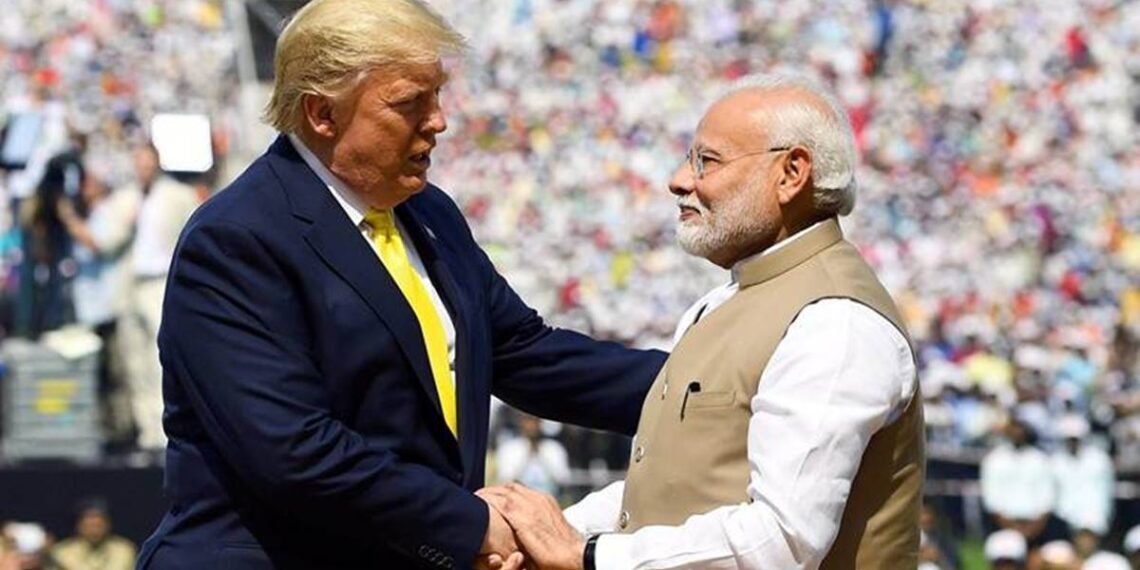After a deadly escalation in Kashmir, India and Pakistan agreed to a U.S.-pressured ceasefire. However, violations and political fallout in India threaten to unravel the fragile peace.
By PC Bureau
Trump Claims U.S. Brokered India-Pakistan Ceasefire Using Trade Pressure
President Donald Trump announced that the United States brokered a ceasefire between India and Pakistan, effective May 10, 2025, leveraging trade pressure to secure the agreement. “We made it clear that trade is a privilege, not a right,” Trump declared during a White House press briefing. “By putting pressure on their economies, we got them to agree to peace.” While the move has temporarily halted hostilities, it has sparked concerns in India about its implications.
The ceasefire follows a brief but intense military confrontation that began after a terrorist attack on April 22, 2025, in Pahalgam, Indian-administered Kashmir. The attack killed 26 civilians, most of them Hindu tourists. India blamed The Resistance Front, a Pakistan-based militant group, for the bombing—a claim Pakistan denied.
In retaliation, India launched Operation Sindoor on May 7, targeting alleged terrorist hideouts in Pakistan and Pakistan-administered Kashmir. Pakistan responded with strikes on Indian military positions, resulting in four days of drone, missile, and artillery exchanges along the Line of Control (LoC). At least 66 people, including civilians and military personnel, were killed in the clashes.
The crisis marked the worst escalation between the two nuclear-armed neighbors in decades. India suspended the Indus Waters Treaty and imposed trade and visa restrictions on Pakistan. Diplomatic pressure from the U.S. and 36 other nations eventually led to a ceasefire agreement. Trump and Secretary of State Marco Rubio were reportedly in direct contact with Indian Prime Minister Narendra Modi and Pakistani Prime Minister Shehbaz Sharif during the negotiations.
"Stop it, and we’ll do trade. If you don’t stop it, we’re not going to do any trade," says #DonaldTrump about the #ceasefire that US claims to have brokered between #India and #Pakistan.
Credit: The White House/YouTube pic.twitter.com/x0VvAwidlo
— Scroll.in (@scroll_in) May 12, 2025
ALSO READ: Why Manipur Needs Continuation of President’s Rule (Part-1)
Despite the ceasefire, both sides accused each other of violations just hours after the agreement took effect. Explosions were reported in Srinagar and Jammu. Indian Foreign Secretary Vikram Misri said, “Pakistan has violated the ceasefire agreed today,” while Pakistan’s Foreign Ministry responded, “India has violated the ceasefire in some areas.” Although hostilities have since eased, tensions remain high.
U.S. Leverage and Trade Pressure
The United States appears to have used its economic influence—possibly through threats of tariffs or market access restrictions—to pressure both nations into compliance. India, which relies heavily on exports of pharmaceuticals and IT services to the U.S., and Pakistan, which depends on American aid, faced significant economic stakes.
While the U.S. proposed future peace talks at a neutral venue, India has emphasized that the ceasefire was a bilateral arrangement, aiming to downplay perceptions of American mediation.
Fallout in India
The ceasefire deal and Trump’s public assertion of U.S. involvement have triggered political and public backlash in India:
Sovereignty and Diplomatic Concerns
India has historically opposed third-party intervention in its disputes with Pakistan, especially on Kashmir. Trump’s statement has reignited criticism at home, with the opposition Congress party questioning whether New Delhi accepted U.S. mediation. Social media platforms saw a surge in nationalistic sentiment, with posts declaring, “India won’t tolerate foreign interference in Kashmir.” The development could strain India-U.S. ties and force Prime Minister Modi to reassert India’s independent foreign policy.
Political Challenges at Home
The truce has sharply divided public opinion. While communities near the LoC welcomed the pause in violence, others criticized what they saw as a lack of accountability for Pakistan’s alleged role in the Pahalgam attack. India’s military claimed to have destroyed nine terror hubs and killed over 100 militants during Operation Sindoor, raising expectations of a firmer response. Opposition parties may use the ceasefire to portray Modi’s government as bowing to external pressure, which could impact the ruling Bharatiya Janata Party in upcoming elections.
Economic Implications
Trump’s use of trade as leverage underscores India’s dependence on its $150 billion annual trade relationship with the U.S. The suspension of trade and water-sharing with Pakistan could also impact local economies on both sides of the border. While Indian markets reacted positively to the ceasefire news, any future threats to U.S.-India trade ties could trigger economic uncertainty.
Kashmir Sentiment and Public Anger
The underlying issue of Kashmir remains unresolved. Many Indians, particularly those affected by displacement and violence in the region, remain skeptical. Unexploded ordnance and reports of continued militant activity keep the situation volatile. Calls for justice for the Pahalgam victims are growing louder, and perceived leniency toward Pakistan could fuel public protests.
Ongoing Security Concerns
The Indian military remains on high alert. “If any violations happen, there will be an immediate and strong response,” said Lieutenant General Rajiv Ghai. Reports of drone activity in Gujarat, Punjab, and Rajasthan have raised fresh concerns about the ceasefire’s durability. Any future violations could reignite military conflict.












